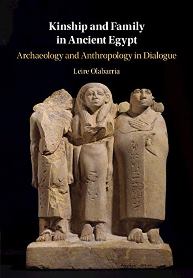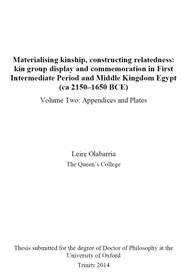| Main » Ad Board » ДРЕВЕН ЕГИПЕТ И АФРИКА » Бит и ежедневие |
Leire Olabarria - Materialising kinship, constructing relatedness
| 26.12.2019, 16:12 | |
Детайлно изследване за конструирането и функционирането на родствените връзки в Древен Египет през епохата на Първия преходен период (ок. 2181-2055 г. пр. н.е.) и Средното царство (oк. 2055-1650 г. пр. н.е.). - на английски език, от MEGA, формат PDF.Сваляне с ляв бутон (downloading by left button) и после през бутона Download.АЛТЕРНАТИВЕН ЛИНК / ALTERNATIVE LINK: - на английски език, от Google Drive, формат PDF. Сваляне с ляв бутон (downloading by left button) от страницата на предоставящия сървър, после през бутона стрелка надолу/after by down arrow button.КАТО ДИСЕРТАЦИЯ / AS A PH. D. THESIS - на английски език, от The University of Oxford, формат PDF.Свалянето става с десен бутон (downloading by right button) и Save as...
| |
| Views: 960 | Placed till: 30.05.2022 | Rating: 0.0/0 | |


